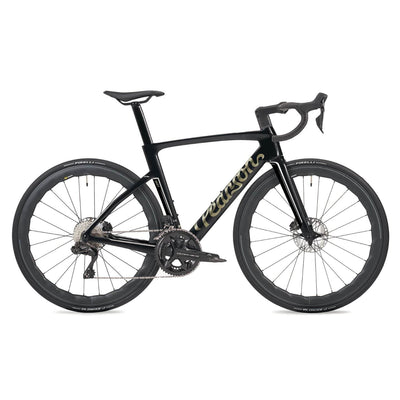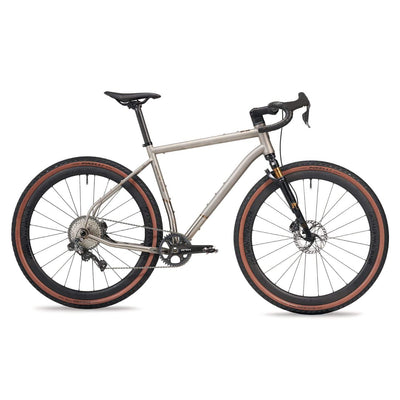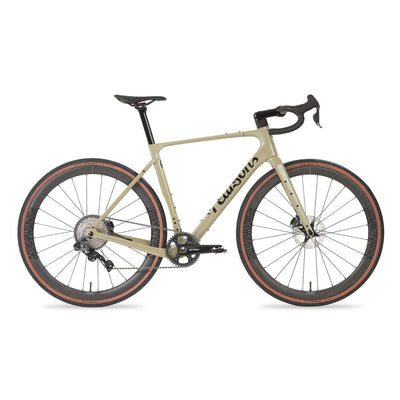Strava vs Komoot: what's the best cycling app?
You know what they say: if your ride isn’t on Strava, it didn’t happen. But Komoot has carved itself out a nice niche that doesn’t overlap much with Strava and that gives cyclists a different experience. What does each app offer, what do they cost, and which should you choose?

There's an ever-growing range of cycling apps out there that you can use to plan a ride, navigate, record your ride and analyse where you've been and your performance once you get home. Although there's overlap, different apps concentrate on different aspects of your experience.
Strava and Komoot are both really popular cycling apps and although they offer some of the same functionality, their emphasis is very different. Strava is focussed on your performance and training and who’s top dog on ride segments, while Komoot is more about the journey, mapping it out and documenting it with photos and narrative.
So they’re aimed at rather different audiences: Strava at riders looking to compete and up their game and Komoot at those more out to enjoy the riding experience. It’s worth noting too that both apps support other outdoor activities like running and hiking.
Mapping

Much of Komoot’s offering is geared to mapping out a route which you can then follow. It uses OpenStreetMap data, but enhances it so that features like woodland, railway lines and cycle paths stand out more. Other users will often have marked up features like viewpoints and quiet roads, making these easier to spot and include in your planned routes (which Komoot calls Tours).
Komoot mapping functionality is easy to use; you can either plot out your route waypoint by waypoint or leave Komoot to work it out for you. Select your fitness level and you’ll get a predicted ride time and there’s a breakdown by type of surface you’ll be riding on.
You can then send the route to your phone or GPS device to navigate (although you need to have paid to unlock the area where you’re riding, see below on pricing).
Strava too offers route planning for its paid subscribers. It too bases this on OpenStreetMap data, although it’s not enhanced as much as Komoot’s, so looks a bit more bland. With a huge number of users, Strava overlays heatmaps though, so you can see, and set the planning tool to follow, routes most used by other cyclists or your own preferred roads.
You can also run up a 3D map in the route planner and move it around and see defined Strava segments, so you can see what's in store for you on your ride.

There’s no automatic route planning, so you’ll need to click on roads you want to ride, but Strava does give you the estimated ride time and a breakdown by surface type, like Komoot and you can select to ride principally on or off road. There's other info on the map like points of interest and the all-important coffee stops.
You can also overlay the map with Strava segments on your ride and select these for Strava Live download to your device, so you can get real-time info on your performance as you ride them. You can define your own segments too, although there are so many already defined that you’ll almost certainly find plenty covering your planned route.
Both apps show you on-road and off-road routes, so you can use either for rides on your gravel bike as well as a road bike.
Performance

This is Strava’s big thing. With its emphasis on segments and how fast you’ve ridden them, it offers a virtual competition and a useful gauge of how well you’re going. The ultimate prize is the segment KOM/QOM and the ultimate let-down that email telling you that someone else has just taken it from you.
Strava Live alerts you when a segment is coming up as you ride and gives you feedback on how well you've performed, although leaderboard rankings are provisional until you've synced your data - the next guy out on the road might have just bettered your provisional KOM/QOM.
But getting a KOM/QOM is becoming ever-harder - see this post from Cyclist to find out why. So Strava has introduced the Local Legends feature that honours the rider who’s ridden a particular segment most in the last 90 days.
Strava isn’t just about KOM/QOMs though. It will track your heart rate and power output and infer the latter if you don’t have a power meter. It also lets you set goals and shows you how your fitness is improving and when you need to ease off, although again you need to subscribe for this.
Unlike Komoot, Strava also supports indoor activities, so you can track your virtual rides and see how these are impacting your fitness.
Komoot doesn’t really cover any of this. You get a distance and speed profile for a route that you’ve ridden and can narrow in on specific parts of it to see your stats for them but that’s about it, so if it’s something you want to follow in more detail you need to use Strava.
Connectivity
Both Strava and Komoot offer seamless connectivity to cycling computers. There’s one click synchronisation of mapped routes to the majority of GPS devices and you can set up Garmin and other computers to sync your rides back to both apps once you’ve finished a ride.
Depending on the make of your computer, this might be automatic, or you may need to manually push the data out from it.
Some cycling computer brands, such as Polar, are retiring their own mapping tools in favour of Komoot, and Komoot works with Garmin, Wahoo, Lezyne and other makes of cycling computer and smartwatch - and with Bosch and Specialized e-bikes.
Phone apps
Both Strava and Komoot have phone apps too, which means you can take their functionality with you on your rides.
In addition to the functions in the desktop app, the Strava phone app lets you record a ride, so you don’t need to use a GPS device. You can hook up a Bluetooth heart rate monitor, with Strava promising power meter support in future.

Komoot too lets you record a ride on a phone and follow a pre-planned route, with turn-by-turn voice guidance, although you’ll have to pay to unlock a region (see below) if it’s not local to you. You can also download a route to navigate offline, so you’re not tied to a phone internet connection, but there’s no option to link in a heart rate monitor or power meter.
Social
This is where Komoot really shines. If you’re happy to stop and take shots or video of places of interest and things you see as you ride, and you spend the time once you get home adding narrative about your ride, you can build up an attractive story of your adventure which you can share with other Komoot users.

Komoot shares a selection of other users’ local rides on your home page and there are collections of routes which it or users have curated to whet your appetite for rides further afield. It will also email you a weekly bulletin of suggestions for your weekend rides.
Both Strava and Komoot have Find Friends functionality and Strava lets you give kudos for friends’ rides and compare yourself to them. Strava lets you form or join clubs and there are lots of challenges and opportunities to earn badges which you can enter. Strava Premium also gives you the option for live tracking by named contacts as you ride and incident detection with Strava Beacon.
If you're not feeling social, you can make rides or your whole account private. You can also define an area where your location data will not be displayed, which is useful to stop strangers from working out where expensive bikes might be stored.
Pricing
Strava and Komoot differ in their pricing models. Both offer you a free tier, with extra functionality if you’re prepared to pay.
In the case of Strava, a free subscription lets you view your activities and the segments that you’ve ridden. But full leaderboards for segments, a full list of your attempts and the option to narrow these down requires a paid subscription. You also need a paid subscription to be able to use the route mapping function.
That costs £6.99 a month or £47.99 a year, paid by card. But free users can still see their performance on any segments anywhere they ride.
In contrast, Komoot gives you one free area and you need to pay to unlock others. The World Pack gives you access to the whole world for ever, with updates, for a one-off payment of £29.99. You can also buy individual areas or bundles of areas. Access to East Surrey costs £3.99, for example, whereas a Surrey and Sussex bundle is priced at £8.99.
If you only use your free region, you’ll not be able to download routes that start outside it, so you’ll need to pay if you want to ride further afield.
There’s also a Komoot Premium package, priced at £4.99 a month or £59.99 annually, that gives you the World Pack plus functionality to plan multi-day tours, bundle up multiple tours and get weather info. It also offers you discounts on bikes and gear from brands including Shimano, Cannondale and Wahoo. There are subscriber perks on Strava too.
Strava or Komoot: which should you choose?
So the choice between Strava and Komoot depends a lot on the type of rider you are.

If you’re looking to hit peak performance for racing and time trials, or you’re just wanting to compete virtually with other riders, then Strava is the better app for you. If you subscribe to the premium package, you’ll get loads of stats on how well you’re going and Strava will help guide your training regime so you can hit your peak when it matters. There’s a reasonable level of support for route planning too.
If on the other hand, your riding is about exploring, finding new, quiet routes, taking in the countryside and documenting and sharing your experience, then Komoot will help better with this. You’ll probably need to pay for the World Pack to give you the flexibility to ride where you want though.

There’s no reason why you shouldn't use both apps either, using Komoot for route planning, where it’s stronger, and Strava to see how well you’re going. And don’t forget that Garmin gives you a lot of functionality via Garmin Connect which overlaps with both Strava and Komoot and is free to use.
5 comments
thank you . j whitham
http://slkjfdf.net/ – Oftagaop Iveirc slh.xqni.pearson1860.com.tke.wc http://slkjfdf.net/
Amazing in depth review, I am in awe of how the pricing rates currency seem to adapt to who’s reading it, I’m really curious to know how you did it
A very helpful review. I had set out to understand the recording accuracy of each app. This aspect did not figure large in Mr Norman’s review. There are however, many articles covering this important aspect.
My experience of them, I have both, is very much as described here; horses for course; enjoy the best of each.









